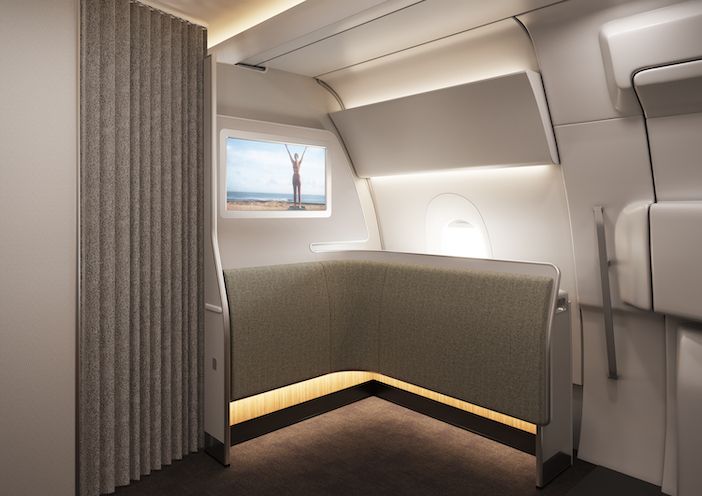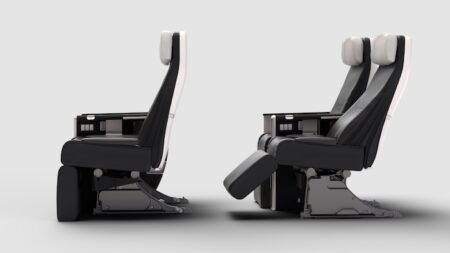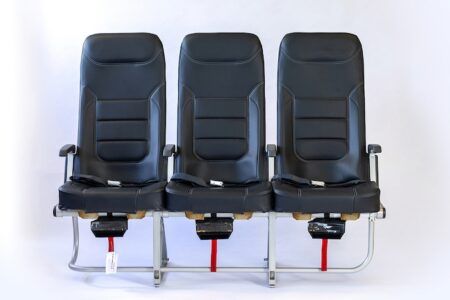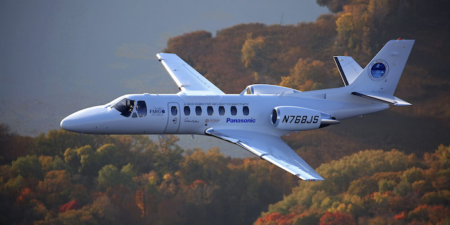Following the reveal of its Airbus A350 First and Business cabins in February, Qantas has now unveiled the entire cabin design, including a dedicated Wellbeing Zone, and the premium economy and economy cabins. The cabins have required a special design, as these 12 ultra-long-haul A350-1000s fitted with an extra fuel tank will fly 238 passengers for up to 22 hours nonstop from Australia to almost any destination in the world – beginning with Sydney to New York and London routes from late 2025.
Work on the cabin designs – dubbed Project Sunrise – began in 2019 and the airline says that tens of thousands of hours have gone into creating the final production version. The Wellbeing Zone is perhaps the most interesting part of the aircraft, as while the point-to-point flights will cut down travel time by more than three hours compared to routes with one stop, a 22-hour flight presents something of a comfort challenge.
The Wellbeing Zone, located between the premium economy and economy cabins, will feature sculpted wall panels and integrated stretch handles, guided on-screen exercise programmes, a hydration station and a selection of refreshments. The space will give all passengers an opportunity to stretch, reduce boredom with a change of scenery, chat to fellow passengers, and engage in wellness exercises.

Premium Economy
According to Qantas, the 40-seat premium economy cabin and the 140-seat economy-class cabins will have the most generous seat pitches of any aircraft in the airline’s fleet (33in in economy class), complemented by ergonomic leg and foot rest systems and personal storage options.
Every seat in every travel class will feature multiple fast USB-C charging ports, and every premium seat will also have integrated wireless charging. Further comforts include fast, free-to-access wi-fi, as well as Bluetooth connectivity so customers can connect their personal headsets to their individual inflight entertainment (IFE) screens.

Qantas has conducted new ‘world first’ scientific research into reducing jet lag and improving sleep and overall wellbeing before, during and after ultra-long-haul flights, which has driven the A350 cabin designs. Australian designer David Caon incorporated the research considerations as part of the overall cabin layout and worked closely with the seat manufacturers to optimise the designs for long-term comfort.
Caon said that every detail has been carefully considered in the designs, from testing thousands of sample fabrics to designing an entirely new premium economy seat exclusive to Qantas. “The Premium Economy cabin has been redesigned from the ground up with a focus on ergonomics, entertainment and privacy,” stated Caon.
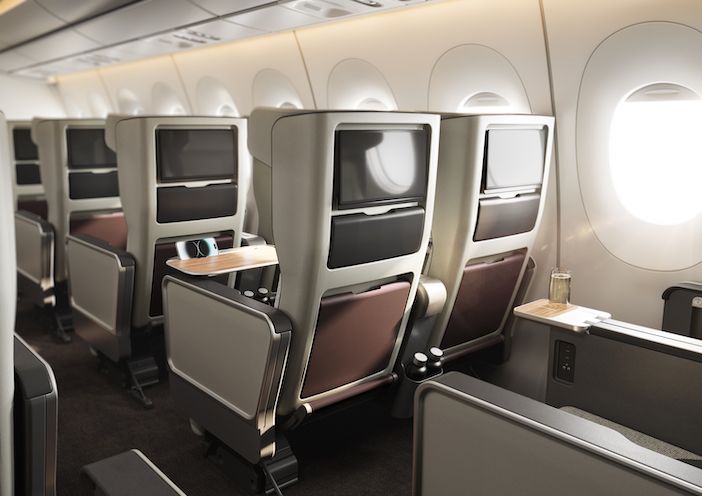
He added that the new headrest wings are the biggest visible difference in premium economy, created to give passengers both additional support and a sense of privacy without making them feel isolated from their travel companions. An upholstered ergonomic foot and leg rest system allows the body to be cradled in recline to better help passengers sleep.
Economy class
Qantas has opted for Recaro Aircraft Seating’s lightweight CL3810 model in the 140-seat economy-class cabins, with a 33in seat pitch, a 6in recline, six-way adjustable headrests, an articulating seat pan for added comfort when reclining, and custom-shaped cushions to help passengers settle in for sleep, a net that can support the feet, and storage space within arms’ reach to store personal items such as glasses and phones.

Travellers will also the latest in inflight entertainment (IFE) technology – the Panasonic Astrova system – with a 13.3in OLED screen, 3D spatial audio, Bluetooth, 4K resolution, and 67W of USB-C power at every seat.
The Qantas team has spent extensive time testing ergonomics, lumbar support and the breathability of the seat fabrics in the new economy seat. “In both the Premium Economy cabin and Economy cabins, we have redesigned every element of the seats to provide better features as well as a fresh look across the entire aircraft to create a sense of light and calm,” added Caon.

Further forward
Of course there will be much envy of those in the more expensive cabins, with the six enclosed first-class suites designed to feel like a mini boutique hotel room, complete with 2m-long flat bed, a dining table for two, a separate recliner chair and a 32in 4k ultra-high definition touchscreen TV. The 52 Business Suites will feature sliding doors for privacy, seats that convert into lay-flat beds, a large dining table, bespoke lighting and an 18in 4k ultra-high definition touchscreen TV.

The CEO view
Qantas Group CEO Alan Joyce said while the Qantas A350 will have a high percentage of premium seats onboard, most customers will travel in the premium economy and economy cabins, so maximising comfort and wellbeing across all cabins was a priority when creating the designs.
“We have spent just as much time on the second half of the aircraft as we did the front, in fact we started studies on the Wellbeing Zone before any other area of the A350,” said Joyce. “The new Project Sunrise flights give us the opportunity to re-think long-haul travel in its entirety, from aircraft cabin design to what ingredients we include on the inflight menu.
“Reducing the number of seats onboard our A350 to 238 compared to the 300-plus seat layout of other carriers means we not only maximise aircraft performance across long distances, we give our passengers more space and comfort.
“Fewer seats translate to more space for each customer and a dedicated Wellbeing Zone for travellers to stretch, help themselves to a snack and spend time out of their seat. We are the only airline in the world that will have a bespoke designed onboard stretch and movement space.”
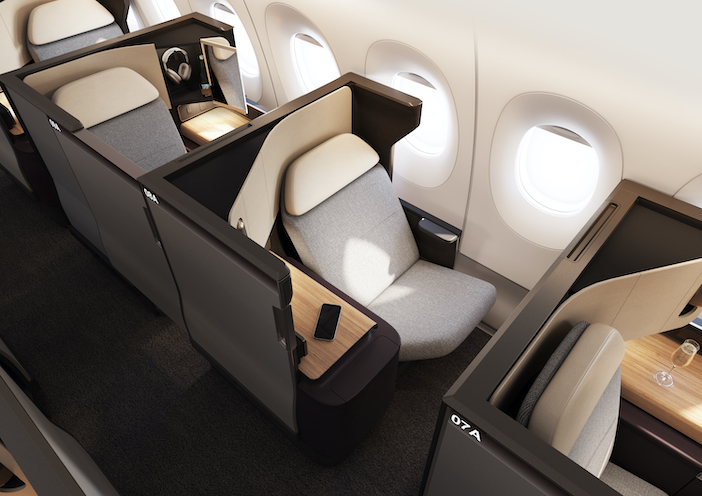
Qantas narrowbody news
This week’s Paris Air Show has seen a further development at Qantas Group, as it has finalised an incremental order for nine Airbus A220-300s, bringing its total backlog for the single-aisle model to 29 aircraft. The A220 was originally selected by Qantas as part of a major fleet replacement programme announced in May 2022, which also included orders for the A321XLR and A350-1000. The carrier had announced its intention to order the additional A220s in February this year.
The A220 has a range up to 3,450 nautical miles / 6,400 kilometres, and is specifically designed for the 100-150 seat segment. Airbus says the A220 has the largest cabin, seats and windows in its class. The aircraft is powered by the latest-generation Pratt & Whitney GTF engines and, as with all Airbus aircraft, the A220 is able to operate with up to 50% Sustainable Aviation Fuel (SAF). Airbus is aiming for all its aircraft to be capable of operating with 100% SAF by 2030.
Qantas is due to take delivery of its first A220 at the end of this year and will operate the aircraft primarily on its domestic route network.
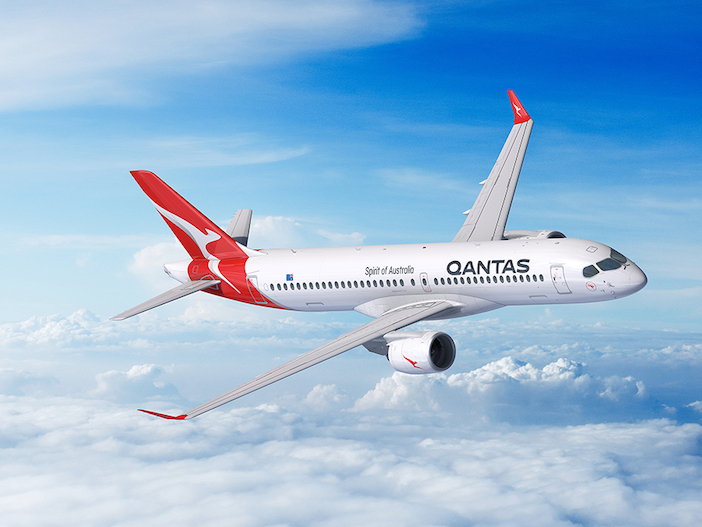
Christian Scherer, Airbus’s chief commercial officer and head of Airbus International said: “We are pleased to announce this incremental order from Qantas. Best in class, the A220 will be the perfect platform for a domestic network that includes everything from short hops to flights of five hours and beyond. Combining efficiency, comfort and longer range, the A220 will also contribute from Day 1 to the carrier’s far-reaching Climate Action Plan.”


